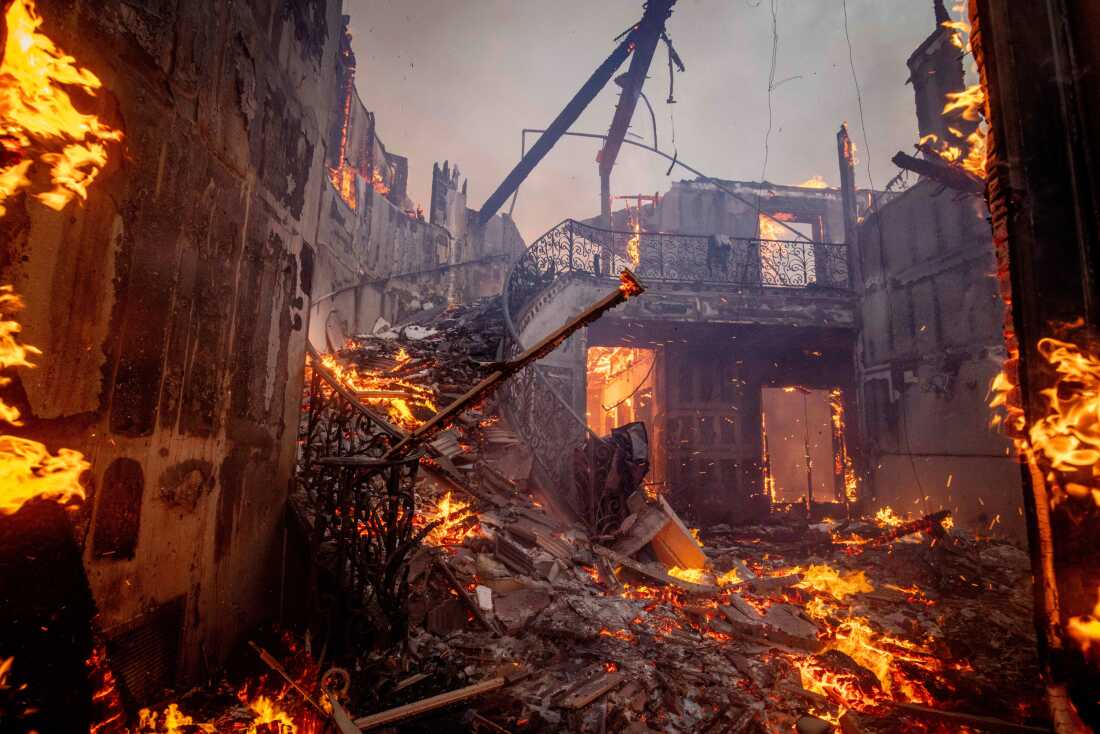Powerful wildfires recently swept through California, leaving homes destroyed, families torn apart, and hearts broken. The fires have been powered by harsh dry conditions and aggressive winds. Southern California has been in a drought since October 1st, which set the stage for enormous wildfires to sweep through the area. The wildfires originated on the evening of January 7th, a night which people have described as life changing.
The first fire, originating in Palisades, Los Angeles, started as a brush fire. It damaged more than 6,800 buildings, homes, and other structures. Meanwhile, the Eaton fire erupted hours after the Palisades fire, and demolished 9,418 structures. Near Castaic Lake, the Hughes fire grew to over 10,000 acres of land.
The fires not also destroyed structures across Southern California, but it also took the lives of many individuals. According to Los Angeles County officials, at least 29 deaths have been caused by the fires. The medical examiner had confirmed that at least 12 deaths were in the Palisades Fire, and at least 17 were in the Eaton Fire. Additionally, about 200,000 people were under evacuation orders as firefighters tried to tame the fires. Some orders have been lifted, but overnight curfews for specific places remain.
Even though the fires have died down, Los Angeles citizens are still grappling with dangerous weather. Specifically, heavy rain is causing several worries for Los Angeles locals.
The main risk of the rain is the debris, ash, and other pollutants from the wildfires that have been carried into the ecosystem and water supply. The threat of toxic runoff, which can be a danger to the health of humans and the environment, is a particular concern of Los Angeles officials. A Purdue University professor stated that the toxic runoff is a danger to organisms that depend on clean water, such as humans, fish, and other animals that encountered the water. This topic has been increasingly studied as of recent in prediction of future wildfires.
Furthermore, as more rain comes, a new concern is developing mudslides.
Mudslides are caused by the burned land mixed with the rain. Lots of burnt areas are under flood watch for precaution. The Mayor of Los Angeles, Karen Bass, has put in an executive order to help to clean up efforts. LA county supervisors have also issued and approved an emergency motion to put in flood-control infrastructure. This is to remove sediment and to quicken the clean-up process.
California officials have been scrambling to alleviate the suffering caused by this so-called natural disaster. California governor Gavin Newson signed a relief package to help the recovery and response in Los Angeles. The relief package was $2.5 billion, and he had stated that the leaders of California “put politics aside” to send the package. Newson had commented during a press conference, “We’re all in this together” as he announced the bill being passed. He also announced that the funds would be available instantly.
As officials continue to fight the wildfires and their devastating effects, they have also asked the federal government and other states to pitch in. Pennsylvania decided to make an impact by sending 40 firefighters to Los Angeles.
Josh Shapiro said in his recent social media post that “Pennsylvania stands ready to help any state facing these unprecedented challenges.”
Despite relief efforts, locals of the Los Angeles area are heavily devastated due to the destruction the fires have caused. People were forced to sacrifice all their belongings and homes to the wildfires. Most people were only able to grab a handful of essentials before they left: family members, food, blankets. Hundreds of thousands of people’s memories were left behind in ashes. The California wildfires speak to the devastation climate change has wrought on the United States. The event only illustrates the danger ahead if we don’t make changes.

